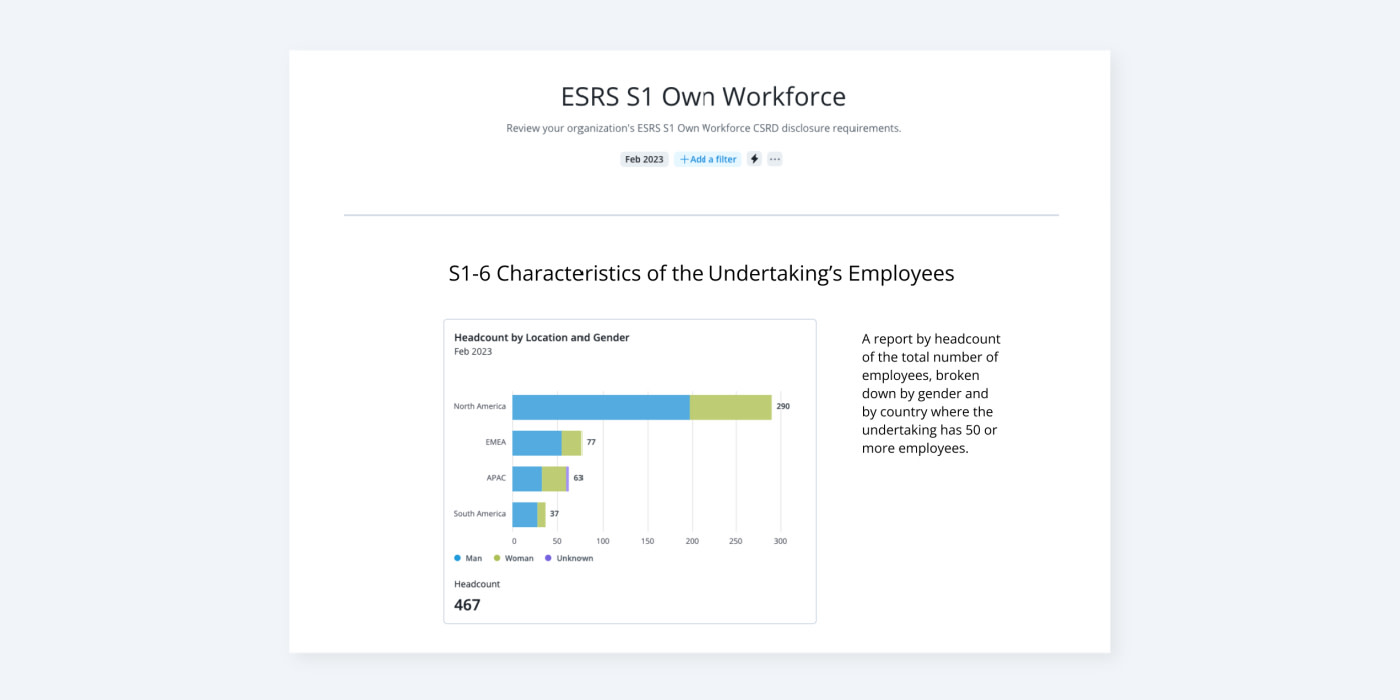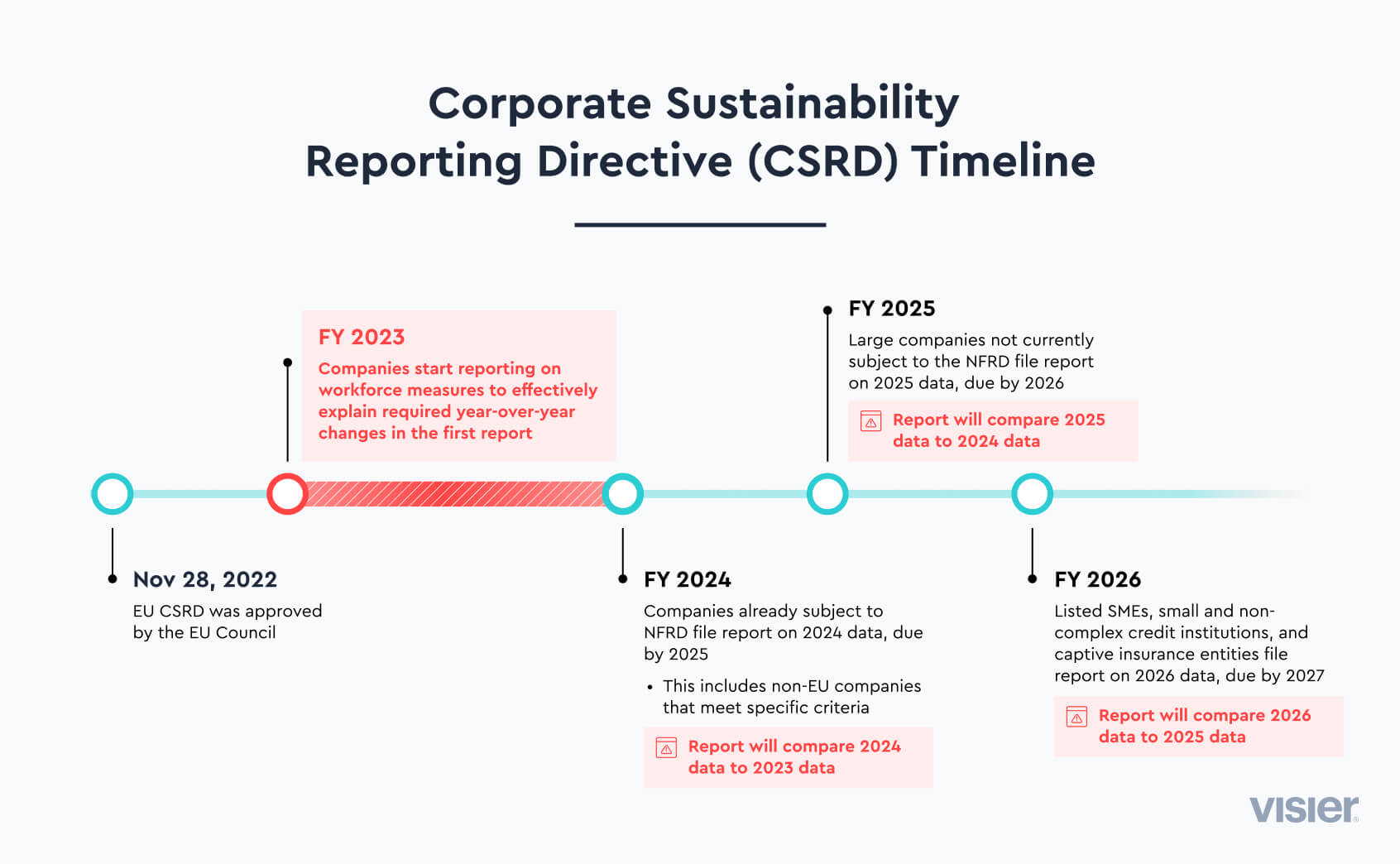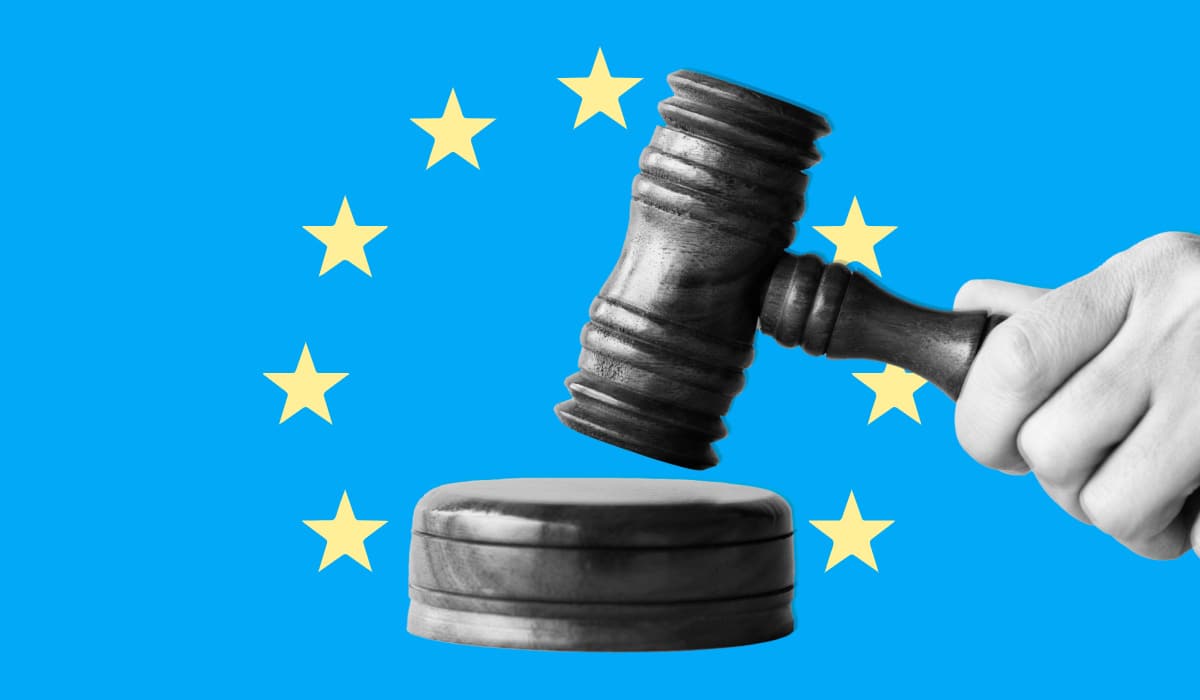CORPORATE REPORTING
CSRD: What HR Leaders Need To Know for 2023
The Corporate Sustainability Reporting Directive (CSRD) elevates the importance of people data to business success, putting it under more scrutiny than ever before. CSRD includes mandatory reporting on workforce data, requiring close attention from CHROs across Europe and beyond. Reporting work begins in 2023—here's what you need to know.
Get a demo
Table of contents
What is the CSRD?Get started on CSRD-compliant reporting nowWhich companies will CSRD apply to?Why is CSRD important to HR professionals?How will CSRD change HR’s role within the business?When is CSRD happening? An overview of the CSRD timelineWhat will companies and HR leaders need to report on?Are there penalties for non-compliance with CSRD?FAQs about Corporate Sustainability ReportingWhat is the CSRD?
The Corporate Sustainability Reporting Directive (CSRD) is a European Union regulation that seeks to standardize how companies report on sustainability. CSRD requires EU businesses to report in seven areas related to sustainability, including people measures, which the legislation refers to as Own Workforce. The purpose of CSRD is to provide more transparent data for investors and other stakeholders.
The CSRD regulations will affect an estimated 50,000 companies and will require reporting on a range of metrics in finer detail, including those relating to the people in an organization.
Get started on CSRD-compliant reporting now
Heads of HR must pay close attention to the CSRD standards relating to Own Workforce, which adopts set of measures and reporting requirements laid out in the ESRS-S1, published by EFRAG. These include mandatory structured reporting for 30+ different people metrics, each of which needs to be supported by explanatory text.
HR leaders need to be prepared to provide year-over-year explanations that offer context on the results, what has contributed to the results, and any responses or adjustments that the company is taking in response to the results. You're not doing this without good data. Heads of HR need robust reporting and analytics to deliver on the quantitative and qualitative requirements of CSRD. Using people analytics to connect people data and business insights, you can confidently provide written commentary on the changes that occur within the workforce year-over-year.
Modern technologies come loaded with the expertise and methodologies you need to report on the metrics required under the CSRD—without having to start from scratch and do it manually—so you can meet the requirement deadlines and avoid hefty non-compliance fines.

Headcount broken down by gender and country for ESRS S1-6 Characteristics of the Undertaking’s Employees reporting (sample data).
4 things HR leaders should do now to get people data ready for CSRD
Connect with your company's ESG team to discuss their overall approach to the new directive and agree how HR will focus on the Own Workforce measures.
Assign team members to review the Own Workforce requirements and assess your data readiness.
Assign team members to research the technology options available for capturing and generating the required measures.
Formulate a workback plan aligned to the overall plan for CSRD reporting that brings together the data and the required commentary as effectively as possible.

Which companies will CSRD apply to?
EU companies that meet two of the three criteria will need to file a CSRD report:
250+ employees and/or
A net turnover of €40 million and/or
A balance sheet total of €20 million
Certain non-EU companies with EU subsidiaries that meet the annual revenue threshold will be required to report on their ESG impacts as defined in the directive. This includes companies that meet the following criteria:
Non-EU companies that have EU subsidiaries with more than 150€ million annual revenue within the EU
Non-EU companies that have at least one large or listed subsidiary or a branch located in the EU with a net turnover of more than €40 million
Why is CSRD important to HR professionals?
HR leaders need to take a leading role in CSRD reporting. Stakeholders and shareholders recognize that people are essential to business success, and organizations have acknowledged the role that data-driven people management plays in setting and achieving strategic goals. Now, CSRD puts people and climate impacts on the same level as financial reporting—elevating the role that HR leaders play in helping companies effectively navigate to success.
How will CSRD change HR’s role within the business?
As well as providing numerical reporting, CSRD means HR leaders need to get comfortable with providing written commentary on why things have changed within the workforce, year on year.
For example, if your company increases its use of contingent employees then you will need to give a view on that. Another example of a change would be an increase in the pay ratio. Why are your most senior leader's pay continuing to grow so much faster than your median employee? You will need to understand your history in order to present a credible explanation.

When is CSRD happening? An overview of the CSRD timeline
HR leaders must start reporting against CSRD workforce requirements in early 2023. This EU directive will become enshrined in the laws of all member countries within 18 months, and the first reports are due in January 2025, covering the calendar year 2024.
That may seem far away, but many aspects of the reports require a comparison to 2023, including written commentary explaining key changes. HR leaders need to be able to cover the required people measures as soon as possible in 2023 in order to effectively explain year-over-year changes during 2024 and what this means for their business.
Here’s a high-level timeline of the corporate reporting events:
FY 2024: Listed companies with over 500 employees file report, covering 2024 and comparing it to 2023
FY 2025: Large non-listed companies meeting the criteria file report, covering 2025 and comparing it to 2024
FY 2026: Listed SMEs, small and non-complex credit institutions, and captive insurance entities are included through simplified rules file report, covering 2026 compared and comparing it to 2025

What will companies and HR leaders need to report on?
People reporting under CSRD requires companies to report on 30+ specific people metrics. Some are fairly straightforward— such as the number of full-time employees. Others are far trickier and more sensitive, such as median pay ratios and gender pay gaps.
There are also requirements to report employee type, training, family leave entitlement (and also family leave entitlement participation), disability participation, incidence of harassment and discrimination, fines for violations of workers’ rights, incidence of grievances, stoppages, length of stoppages, equal opportunities, and many more.
Are there penalties for non-compliance with CSRD?
Yes. Companies that fail to report and comply with the CSRD face fines of up to 10 million euros or 5% of annual revenue.
FAQs about Corporate Sustainability Reporting
What is CSRD in ESG?
CSRD stands for Corporate Sustainability Reporting Directive. CSRD is an EU ESG Environmental, Social, Governance (ESG) standard designed to make corporate sustainability reporting more standardized and transparent, putting people and climate impacts on the same level as financial reporting.
What should be reported under CSRD?
Companies will need to report on seven key areas of their business related to sustainability. One such area relates to people's measures. which require companies to report and provide an explanation on 30+ specific people metric related to their business.
What’s the difference between CSRD and ESRS?
The CSRD is an EU law that requires eligible companies to issue annual sustainability reports. The European Sustainability Reporting Standards (ESRS) is a framework that outlines how and what information and metrics those companies need to report to EU regulators to comply with CSRD.
What’s the difference between NFRD and CSRD?
The CSRD is the replacement legislation for the NFRD. Both are directives that mandate the documentation of non-financial data in the European Union, but the CSRD is designed to upgrade and improve the scope and depth of sustainability reporting amongst eligible companies.


